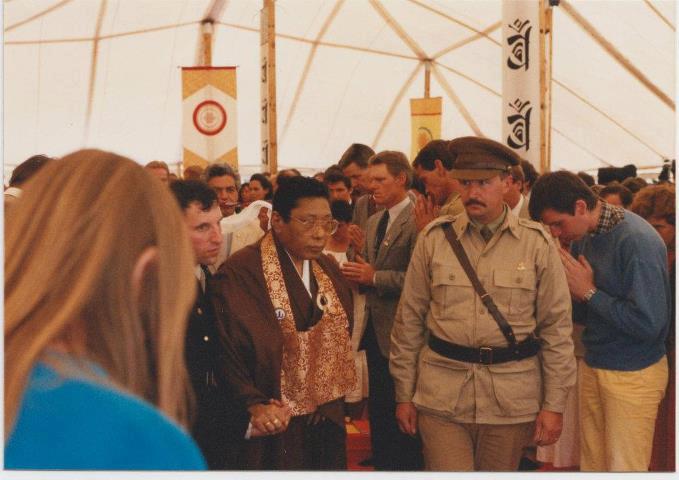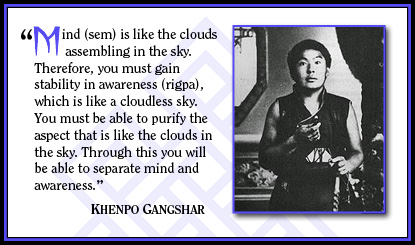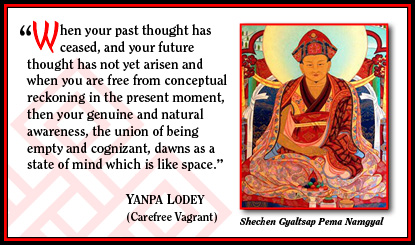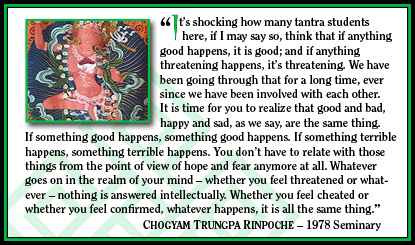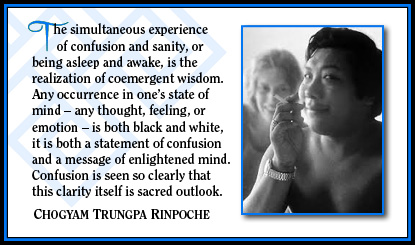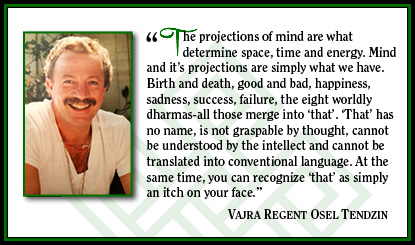A Residential Training and Retreat Center in the Practice Lineage of Chogyam Trungpa Rinpoche
Surmang Kagyu Retreat Center is a small, independent meditation center founded by direct students of Vidyadhara Chogyam Trungpa Rinpoche.
We engage the authentic meditation practices and view of the Maha Ati and Mahamudra schools of Tibetan and Indian Buddhism. We also engage the Shambhala teachings of Trungpa Rinpoche which is a secular path. We do not offer retreats based on "Shambhala Buddhism."
We apply the pith instructions taught by Trungpa Rinpoche, Osel Tendzin, Khenpo Gangshar Wangpo and Jamgon Kongtrul of Shechen in our training. We consider Trungpa Rinpoche's transmission of this lineage to be a unique and complete transmission of the Surmang Kagyu and Shambhala lineages to the west and we maintain those transmissions here for those who would like to engage them fully.
Trungpa Rinpoche's lineage is known as the "Practice Lineage." This refers to the fact that we resolve the view not through intellectual study but through the actual practice of meditation. We offer a lot of practice retreats including two month-long dathuns per year. There is no other center in the United States currently offering the one month dathun retreat.
"There are many meditators but few who know how to meditate." Padmasambhava
The Shambhala Teachings are secular in the sense that they are not culturally or religiously biased. They are based on the fundamental truth of non reference point experience as the basis of wisdom inherent in our human experience. This self-existing wisdom is expressed in the culture, art and spirituality of every human society. As a Shambhala practitioner we can find this expression of what Trungpa Rinpoche calls "basic goodness" in many forms.
During Rinpoche's life he explored Japanese spirituality and culture along with celtic traditions and forms borrowed from the imperial courts of both the orient and occident. We should not suppose that we have to adopt these forms wholesale. In other words, when we engage these forms it is from the view of the Shambhala teachings on the Great Eastern Sun and basic goodness. We do not adopt the theistic or primitive views of reality often implicit in these forms when engaging in other religious or contemplative traditions. For a Shambhala practitioner one can recognize and engage the teachings of Shambhala through all expressions of human art, spirituality and culture in the same way that the Dzogchen teachings are manifest in every experience. If we consider ourselves Shambhala practitioners there should be no confusion on this point.
A good example of this occurred with the recent death of Queen Elizabeth II. Many people, whether they were subjects of the English crown or not , were deeply moved by the funeral procession. This communal display is understood from the perspective of natural awareness and mandala principle.
There were rainbows with the death of Queen Elizabeth which is a sign of great significance in most cultures. There were rainbows at the cremation of Vidyadhara Trungpa Rinpoche, the Vajra Regent and the 16th Karmapa.
The funeral ceremony of Queen Elizabeth was a perfect expression of what we call Shambhala warriorship manifesting in society. This is the essence of Enlightened Society. At the same time, there is no question of becoming "monarchists" or joining the English Church. Shambhala practitioners understand sacred view from the perspective of nontheism. It is because we are practitioners in the lineage of Trungpa Rinpoche that we can experience this properly as an expression of Enlightened Society. This nontheistic perspective can enliven our old cultural methods for connecting with sacred world with a new nontheistic understanding for this contemporary age. This is the vision of Trungpa Rinpoche's mind terma known as the "Shambhala Teachings" and why these teachings have appeared now at "the end of the 500 year dark age"-- a time when people's ability to connect with this Sacred World is waning.
Vidyadhara Chogyam Trungpa Rinpoche drew other teachers from various traditions to him not to enrich his message but to inject genuine spirituality into those dying forms. We do not become pseudo Shinto or Zen practitioners when we as Shambhala practitioners take up the contemplative arts.
We don't become Taoists when we do Qigong or engage the I Ching.
We are Shambhala practitioners. The main point in engaging these disciplines is to do it from the view of non reference point experience which is the mind of Trungpa Rinpoche and is the mind of the Shambhala Lineage. In that sense, we are always returning to our ancestral home as the Mukpo Clan. We are re-invigorating now degenerate cultural forms with the essential meaning. This is called being a true chauvinist in the Shambhala sense.
Human beings are inherently capable of manifesting sacred world and we are also capable of recognizing it. This is what it means to be a human being. Between heaven and earth we join the vision of the Great Eastern Sun with the precision of nowness. This fulfills the complete realization of our precious human birth--primordial being as "Universal Monarch."
Our primary practice is Shamatha-Vipashyana. And we follow Trungpa Rinpoche's oral instructions on that practice known as the "Touch and Go." Without understanding that as the basis of the view of nonreference point experience any exploration of other arts and cultures from the Shambhala perspective will become confused and will miss the fundamental point. In order to understand the Shambhala teachings and path it is necessary to understand the Dzogchen view as non reference point experience directly. This is the main point. Without understanding that main point our Shambhala disciplines become disparate paths that take us away from our authentic lineage rather than connect us to it.
For that reason, we do not teach the Shambhala path separately from the nine yana journey that Trungpa Rinpoche spent 17 years establishing here in North America. It is especially important to engage the annutarayoga tantra practices of Vajrayogini and Chakrasamvara with the preparatory training and pith instructions of Vidyadhara Trungpa Rinpoche. It is essential to find a trustworthy spiritual friend in the lineage of Trungpa Rinpoche as a guide. While there is no longer an authentic organization manifesting this mandala "out there" there are still a few individuals who hold this lineage. People who are drawn to the teachings of Chogyam Trungpa Rinpoche should seek them out in order to engage these teachings.

